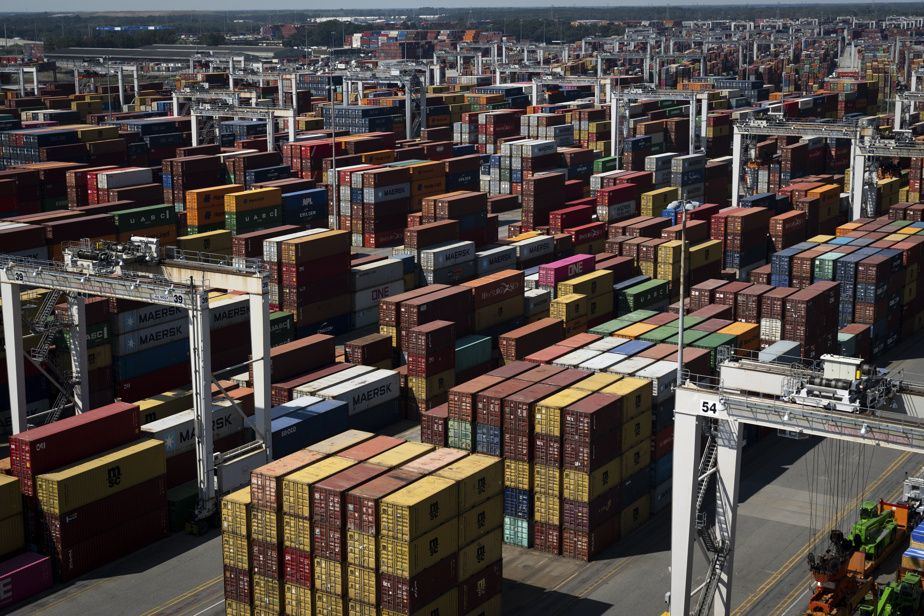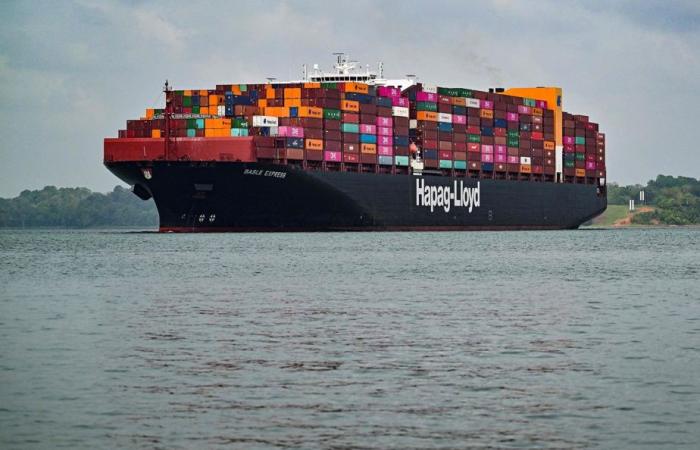Stephanie Loomis thought the chaos in the global supply chain was over. Dozens of ships anchored off congested ports, skyrocketing container and shipping costs, shortages of goods—it all seemed like a distant memory, as distant as the pandemic.
Published at 1:52 a.m.
Updated at 8:00 a.m.
Peter S. Goodman
The New York Times
Better luck next time, Stephanie.
Mme Loomis, head of ocean freight for the Americas at Germany’s Rhenus Logistics, spends her days negotiating with international shipping companies. Her clients ship products and parts around the world. In recent months, she’s seen freight prices soar, driven by a series of sea-related disruptions.
In late 2023, Yemen’s Houthi rebels began firing on ships entering the Red Sea bound for the Suez Canal, a vital shipping artery between Asia, Europe and the North American east coast. Shipowners diverted their vessels to the Cape of Good Hope, at the southernmost tip of Africa, adding two weeks to the journey.
PHOTO ARCHIVES REUTERS
This screenshot from a video released by the Houthi rebel government shows a missile exploding on the Greek bulk carrier MV Tutor, which sank in the Red Sea on June 12, 2024.
In addition, a severe drought in Central America is lowering the water level of the Panama Canal, limiting passages in this crucial route for international trade.
Longshoremen and railway workers on strike?
Since June, American longshoremen on the East Coast and the Gulf of Mexico have been threatening to walk out, while their German colleagues have been going on strike for better wages. In Canada, railroad workers are ready to walk out, jeopardizing rail transportation in North America and threatening to block major ports like Vancouver.
Uncertainty in shipping is already driving up rates and raising fears of a blockage that could bring back retail shortages during the crucial holiday season. The disruptions also risk reigniting inflation, a worry that is lurking in the wake of the U.S. presidential election.
During the pandemic, we have seen that any problem at one point in the supply chain has a ripple effect.

PHOTO ERIN SCHAFF, ARCHIVES THE NEW YORK TIMES
Containers stacked at the Port of Savannah, Georgia
A late-arriving container of chemicals causes a cascade of slowdowns at downstream plants. Ships stuck in ports throw the distribution network out of sync, clogging warehouses and disrupting trucking and rail.
I call it the COVID-2 market. In many ways, we’re back to pandemic conditions. Here we go again.
Stephanie Loomis, head of ocean freight for the Americas at Germany’s Rhenus Logistics
In October, shipping a 40-foot container from China to Europe cost an average of $1,200; today, it’s $6,900, according to Norway’s Xeneta Shipping Index. That’s well below the $15,000 peak reached in late 2021, at the worst of the crisis, but it’s almost five times more expensive than pre-pandemic prices.
Transpacific shipping has increased in a similar manner. Shipping a 40-foot container from Shanghai to Los Angeles costs over $6,700, and from Shanghai to New York it’s almost $8,000. By the end of 2023, it was around $2,000 in both cases.
“We haven’t reached the peak yet,” said Peter Sand, senior analyst at Xeneta.
Importers are also complaining about the return of a practice that has left them with gray hairs during the pandemic: carriers often cancel confirmed bookings, while demanding special handling fees and bonuses to ensure that containers are actually loaded onto ships.
“Getting containers is a real pain,” said David Reich, whose company MSRF in Chicago assembles gift baskets for Walmart and other major retailers. “It’s frustrating.”
Concerned about the looming chaos in shipping, Reich is moving up his orders in anticipation of the holidays. To guard against delays, he is pressuring his Chinese suppliers to speed up the packaging of food products.
Mr. Reich had signed contracts with two ocean carriers for four containers a week from China to Chicago for less than $5,000. Now he has been notified that the carriers are imposing “peak season surcharges” that could be as high as $2,400 per container.
And even at those prices, carriers often say they don’t have any space on board, he said. He fears he’ll have to book on the open market (spot market), where prices fluctuate, and are currently around $8,000.
The World Shipping Council, a trade association, says that “open market rates reflect demand and supply in a competitive global market; the vast majority of container traffic is subject to rates negotiated under long-term contracts.”
Experts dispute this claim: they say there is little competition on major container shipping routes, allowing carriers to raise prices sharply when the system is under strain.
Two ships sunk in the Red Sea
The most recent surge in shipping costs is linked to Yemen’s Houthi rebels firing on ships in support of the Palestinian Hamas.
This threat seems to be getting worse: the Houthis, armed by Iran, are increasing their attacks with missiles and naval drones (fast boats loaded with explosives and controlled remotely).
In the spring, these attacks sank a Greek ship carrying coal and a Maltese ship loaded with fertilizer.
Container traffic through the Suez Canal has fallen to a tenth of its usual throughput. Most ships linking Asia and Europe now bypass Africa, which takes longer and uses more fuel.
At the same time, carriers have concentrated their fleets on the most lucrative routes, such as Shanghai to Rotterdam, the Netherlands, Europe’s busiest port. That adds stops and connections at other destinations: Containers must be unloaded and reloaded at transshipment ports such as Singapore and Colombo, Sri Lanka, which are now overwhelmed. Ships must wait at anchor for up to a week before docking.
PHOTO ROSLAN RAHMAN, ARCHIVES AGENCE FRANCE-PRESSE
The French ship Jacques Sadethe world’s largest container ship powered by liquefied natural gas, docked at the Port of Singapore
Given the disruption and additional costs, some increase in fares is inevitable. But customers accuse carriers of inflating prices beyond their additional costs.
“Carriers have learned lessons from the pandemic,” says Mr.me Loomis. They will not hesitate to play with capacity and increase freight rates.”
This article was published in the New York Times.
Read the original version (in English; subscription required)








